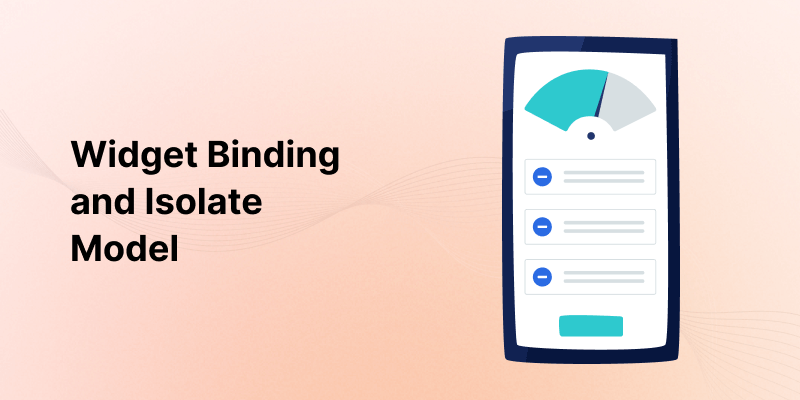
UI management and performance optimization are crucial for creating responsive applications. Two important concepts in this realm are Widget Binding and the Isolate Model. Below, we will explore these concepts with concise explanations.
You may also visit our Flutter app development company page.
Widget Binding
Widget Binding is part of the Flutter framework that connects the Flutter framework with the underlying operating system. It ensures that the UI updates correctly in response to changes in state or user interactions. The primary class involved is WidgetsBinding, which is responsible for managing the lifecycle of widgets and handling events.
Example of Using WidgetsBinding
|
1 2 3 4 5 6 7 8 9 10 11 12 13 14 15 16 17 18 19 20 21 |
import 'package:flutter/material.dart'; void main() { runApp(MyApp()); } class MyApp extends StatelessWidget { @override Widget build(BuildContext context) { WidgetsBinding.instance.addPostFrameCallback((_) { print("Frame rendered"); }); return MaterialApp( home: Scaffold( appBar: AppBar(title: Text("WidgetsBinding Example")), body: Center(child: Text("Hello, Flutter!")), ), ); } } |
in the example, addPostFrameCallback is used to execute a callback after the current frame is rendered, which can be useful for tasks that need to happen after the UI is built.
The Isolate Model
Flutter uses an Isolate Model for concurrency, allowing you to run code on separate threads. This is particularly important for maintaining smooth UI performance, as it prevents heavy computations from blocking the main thread.
Creating an Isolate
|
1 2 3 4 5 6 7 8 9 10 11 12 13 14 15 16 17 18 19 20 21 22 23 24 25 26 27 28 29 30 31 32 33 34 35 36 37 38 39 40 41 42 43 44 |
import 'dart:async'; import 'dart:isolate'; void main() { runApp(MyApp()); } class MyApp extends StatelessWidget { @override Widget build(BuildContext context) { return MaterialApp( home: Scaffold( appBar: AppBar(title: Text("Isolate Example")), body: Center( child: ElevatedButton( onPressed: () { startIsolate(); }, child: Text("Start Isolate"), ), ), ), ); } void startIsolate() async { final receivePort = ReceivePort(); await Isolate.spawn(isolateFunction, receivePort.sendPort); receivePort.listen((data) { print("Received from isolate: $data"); receivePort.close(); }); } static void isolateFunction(SendPort sendPort) { // Simulate heavy computation int result = 0; for (int i = 0; i < 1000000; i++) { result += i; } sendPort.send(result); } } |
An isolate is spawned to perform a heavy computation without blocking the main UI thread. The result is sent back to the main thread via a SendPort.
Conclusion
In summary, Understanding Widget Binding and the Isolate Model is crucial for building efficient Flutter applications. These concepts help ensure smooth UI interactions and maintain performance during complex operations. Use WidgetsBinding for lifecycle management and the Isolate Model for concurrent processing to enhance your Flutter development.
Thanks for reading. You can also check other blogs from here. Happy coding!!!

Be the first to comment.